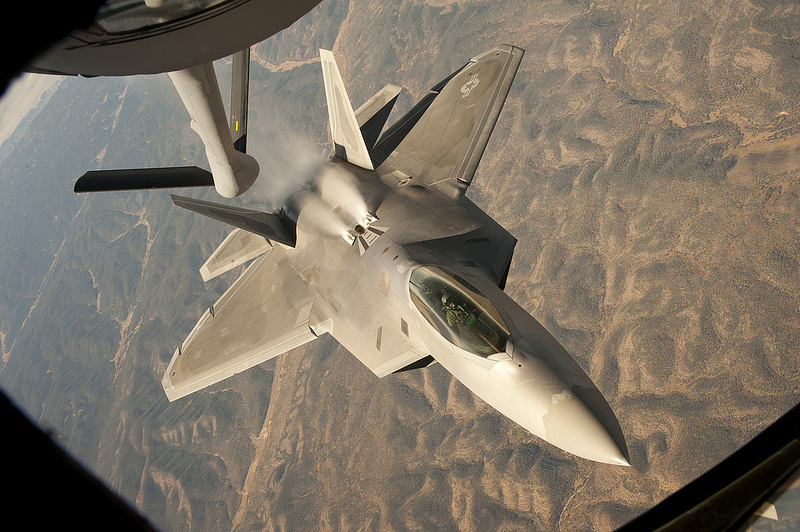More than 24 months since the last hypoxia-like incident occurred, the U.S. Air Force has decided to equip its F-22s with a backup oxygen system.
The Raptor fleet will soon receive a brand new backup oxygen system as part of multiple contracts awarded to Lockheed Martin (worth 30 Million USD) DefenseNews reported.
F-22s belonging to the 3rd Wing from Joint Base Elmendorf-Richardson, Alaska, have already received the new system, that will be implemented by the rest of the radar-evading planes by the second quarter of year 2015.
Being automatic, the new system does not require pilot intervention; a big improvement from the previous one that had to be activated by the pilot, which might be quite difficult, if not impossible if the latter was experiencing hypoxia-like/oxygen deprivation symptoms.
Because of the mysterious problem that plagued the stealthy fleet to such an extent the radar-evading aircraft were grounded back in 2011 following a deadly incident involving an Alaska-based, the Pentagon initially grounded the F-22s, and then, after lifting the flight ban, it restricted Air Force Raptors to fly near a “proximate landing location” in order to give pilots the possibility to land quickly if their planes’ On Board Oxygen Generating System (OBOGS) fail.
In May 2012, two 1st Fighter Wing “whistleblowers” appeared on CBS 60 minutes to explain why they were “uncomfortable” flying the Raptor (before changing idea few days later).
The installation of the new automatic backup oxygen system is not the only upgrade the U.S. Raptors will get in 2015: according to DefenseNews, along with advanced electronic warfare protection and improved ground threat geolocation, F-22s should also get the ability to carry AIM-120D and AIM-9X advanced missiles.
In April 2013, the plan to integrate the Visionix Scorpion helmet-mounted cueing system (HMCS), that would have made the F-22 capable to use HOBS (High Off Boresight System) air-to-air missiles as the AIM-9X, filling a gap against other current and future stealth planes in close air combat, was cancelled following the cuts imposed by the sequestration.
Let’s see what happens this time.
Image credit: U.S. Air Force

















